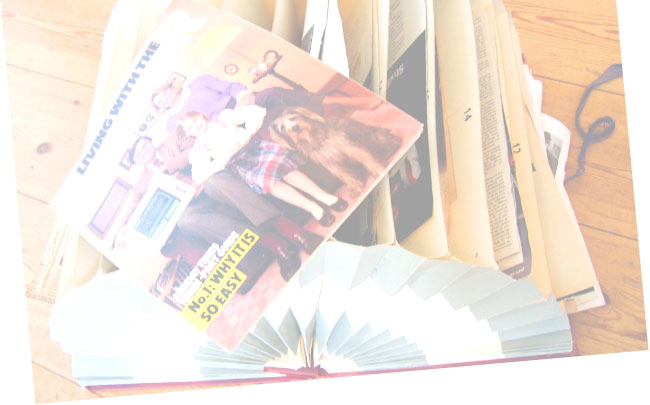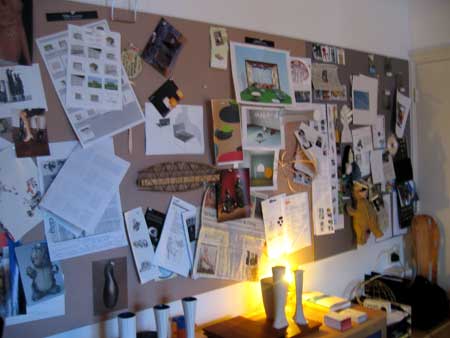
Designer Interaction with Informal Collections of Visual Material
Committee
Rector MagnificusProf. dr. P.J. Stappers
Prof. J.M. Hennessey
Prof. dr. J.P.L. Schoormans
Prof. dr. ir. J.B.O.S. Martens
Prof. dr. B. Laurel
Prof. G. Crampton Smith
Prof. dr. K.P. Lee
11-11
Defence on November 11, 2005 at 10:30 AM in the Senate Room of the Aula. At 10:00 AM a short presentation of the key findings.Meer Promotieceremonie (Dutch)

Collections Designers Keep
In this chapter design agencies were visited in a contextual inquiry. Six designers (one pilot and five participants) at different agencies in the Netherlands were visited. The designers were first asked to fill in a booklet (or cultural probe) in advance, they were visited at work and asked to explain the role of visual material in the design process by bringing out artefacts, answering a structured interview and giving a tour of the workplace. The contextual inquiry resulted in a list of 6 considerations for a tool to support collecting visual material that was used in the development of Cabinet in the next chapter.Some links and lists for further reading and exploration:
- Watch a slideshow on Flickr from the photos in the contextual inquiry.
- The visited agencies were FLEX, Marcel Vroom, WAAC's, NPK and OneSize; Marieke Sonneveld participated in the pilot study. li>The contextual inquiry was basically a follow-up and an update to the earlier contextual inquiry by Gert Pasman, Raghu Kolli and Jim Hennessey
- There is a lot to read on contextual inquiries and contextual design but what I hadn't read, but did find out in the process is the power of artefacts (letting your subjects bring out physical examples of their work and tools) and using the digital camera to direct attention (by pointing at something with the camera, you automatically invite your participant to talk about it)
- For some background on using these present packages, read the seminal piece on Cultural Probes by Gaver, Dunne and Pacenti or Empathy probes by Mattelmäki and Battarbee
 .
. In the Appendix the cultural probe and the outline of the structured interview can be found.
Flickr for inspiration
Links to related projects:
ID-StudiolabThe TRI Setup
Cabinet
ACT 02
forinspirationonly.com
Links to related topics:
Cabinet of CuriositiesResearch through Design
Idea Generation Methods
Context mapping
More inspiration only
Louis PasteurAlbert Einstein
Apple
flickr



